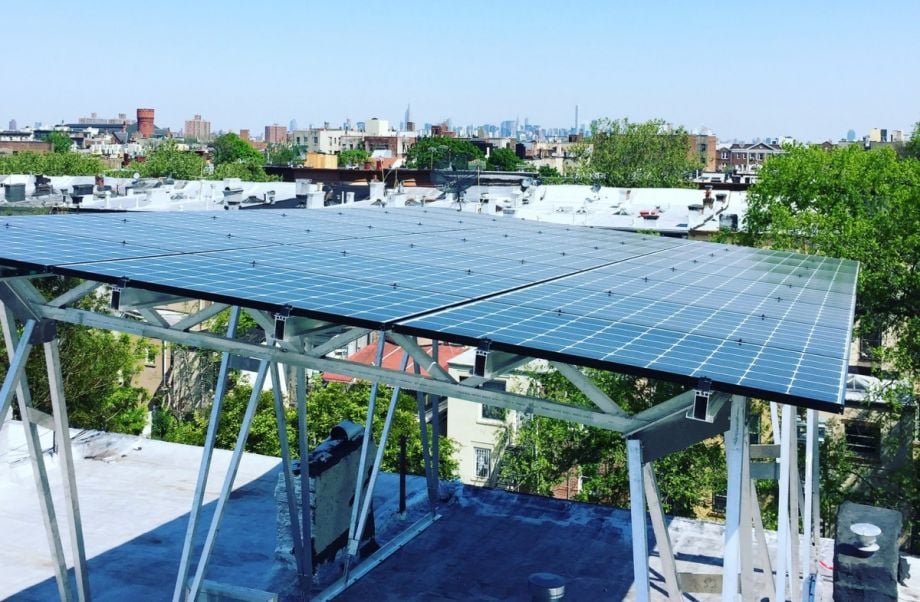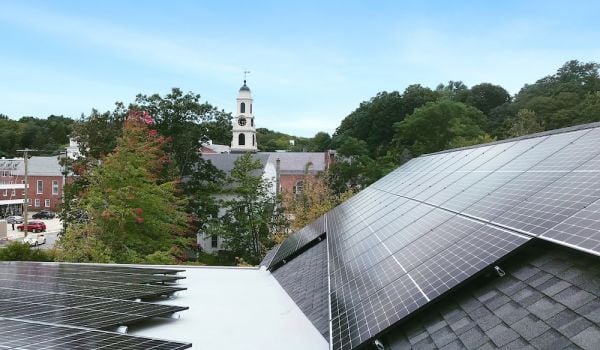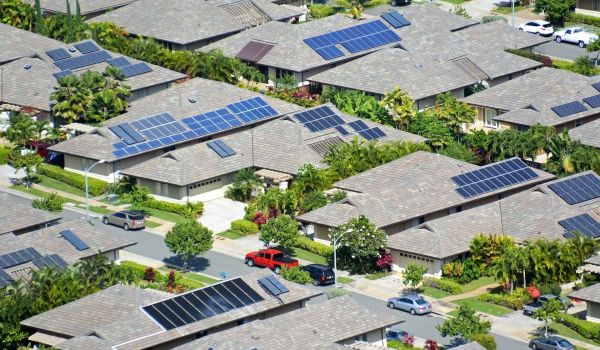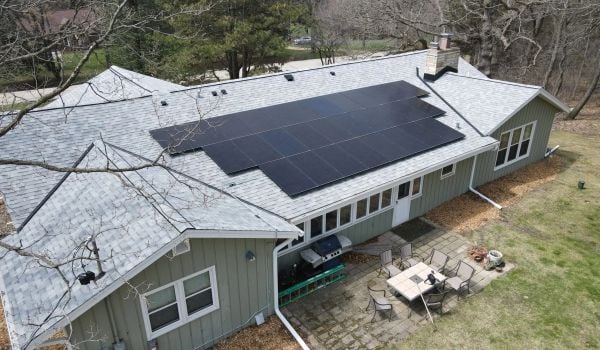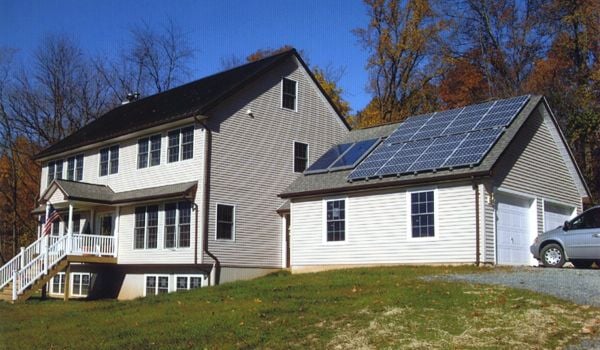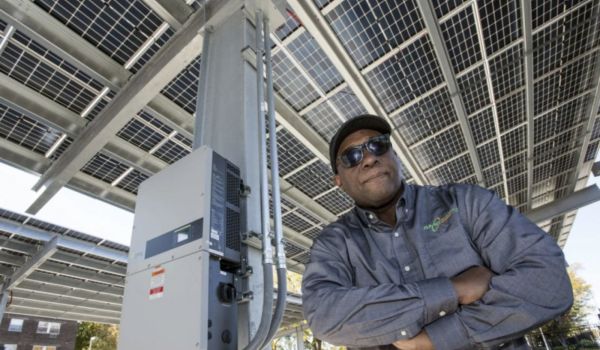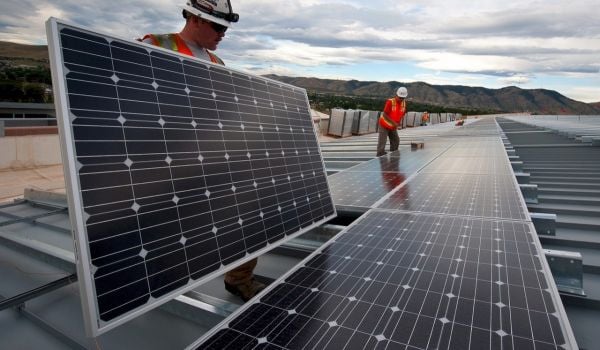For big-city residents interested in sustainable energy, solar can be a tricky puzzle. Tenants often don’t own the building they live in. There are HVAC ducts and other building equipment taking up precious rooftop real estate. Setback requirements limit the amount of space panels can take up, which in turn limits the energy return the solar system can provide. In cities such as New York, there’s also the fact that rooftops can be communal patios that offer a rare bit of open space, which people are loath to give up.
“Certainly it is more complicated than [suburban or rural solar]. There are lots of reasons we haven’t seen as much urban solar development,” says John Farrell, director of Democratic Energy at the Institute for Local Self-Reliance.
According to T.R. Ludwig of Brooklyn SolarWorks, one of the biggest challenges in New York City is the fire code. It requires keeping a 6-foot-by-6-foot rooftop corridor clear for firefighters. Ludwig says on a 2,000-square-foot roof, about half the available space is taken up by the requirement.
“You can still put in solar panel, but you really can’t get one large enough to offset someone’s usage,” Ludwig says.
For Ludwig’s company, the solution has been to get the panels off the roof — or, more specifically, above it. They worked with a design firm, SITU Studio, to create a modular rack called Solar Canopy to raise the panels 9 feet off the rooftop.
“If you raise the system 9 feet you go above the fire code essentially. You can then use a lot more of the surface area of the roof. On an un-raised system you get 4 to 5 kilowatts. With the raised canopy, you get 10 to 15 kW,” Ludwig explains.
As a bonus, the canopy leaves space for rooftop decks and perhaps even improves the space by providing shade.
To date, they’ve installed 10 canopy systems and have another 20 in various stages of design and installation. Their focus has been on small, flat-roofed, multifamily buildings in the outer boroughs.
“It’s a pretty cool idea. I’m actually surprised someone hadn’t thought of it before. So many properties have gotten ruled out in studies, because they assumed rooftop space is what’s available when you look at it from a satellite. They say ‘oh there’s all this other stuff on the roof, so we can’t maximize the roof space’ and this really would,” says Farrell.
Even a solar evangelist such as Farrell doesn’t think solar will power entire cities anytime soon. “The amount of available roof space is not going to be enough to provide all of a city’s electricity. … And the cost of large-scale energy storage will probably continue to be cost-prohibitive for decades. But I think we can still get a huge chunk of energy generation from within our cities.”
In order to increase the amount of energy cities are drawing from solar, both Farrell and Ludwig say there need to be some significant improvements in policy and permitting.
“I think the technology issues are mostly solved. It’s really mostly the boring policy and regulatory stuff that needs to get figured out,” Farrell explains.
For starters, he says, “Cities need to make sure they have the best and most supportive rules in place to make it easy to install solar. Make sure the permitting process is easy and turn around times are very short so cost can be very low.”
Ludwig says that is not currently the case. “The Department of Buildings has a long way to go on permitting and administrative side of solar. It’s kind of ridiculous how much paperwork you have to do to get a solar system on the roof. Anything to streamline that is a great thing.”
According to Farrell there also need to be much larger, systemic changes in how we view and operate the electrical grid. “We need to change the way we operate the grid and maybe think of it as a commons like the roads,” he says. “For package delivery we don’t have one monopoly company that does package delivery, we have many companies and they all use the roads and we just pay for the roads with our taxes because we understand that they’re a core piece of our economic activity.”
But though that’s unlikely to happen anytime soon and solar energy is more difficult to implement in cities than it could be, Farrell is still hopeful about the direction things are headed.
“Frankly few things in the world make more sense than generating power right where we use it. Solar capacity is growing by leaps and bounds each year and I expect that to continue.”
The Works is made possible with the support of the Surdna Foundation.

Josh Cohen is Crosscut’s city reporter covering Seattle government, politics and the issues that shape life in the city.
Follow Josh .(JavaScript must be enabled to view this email address)


